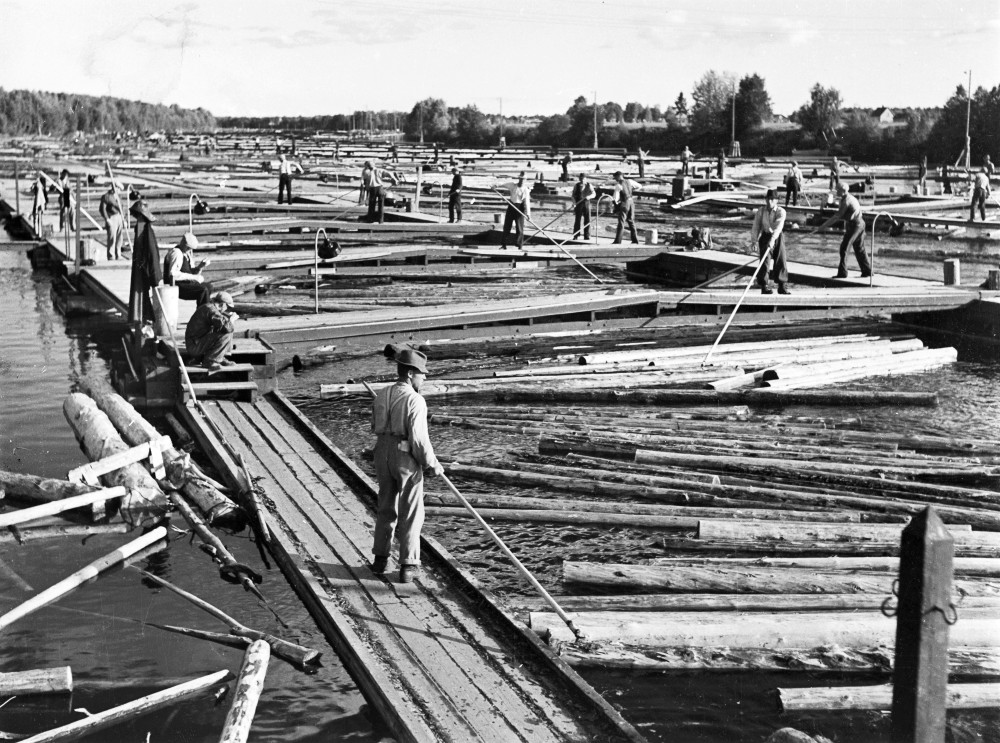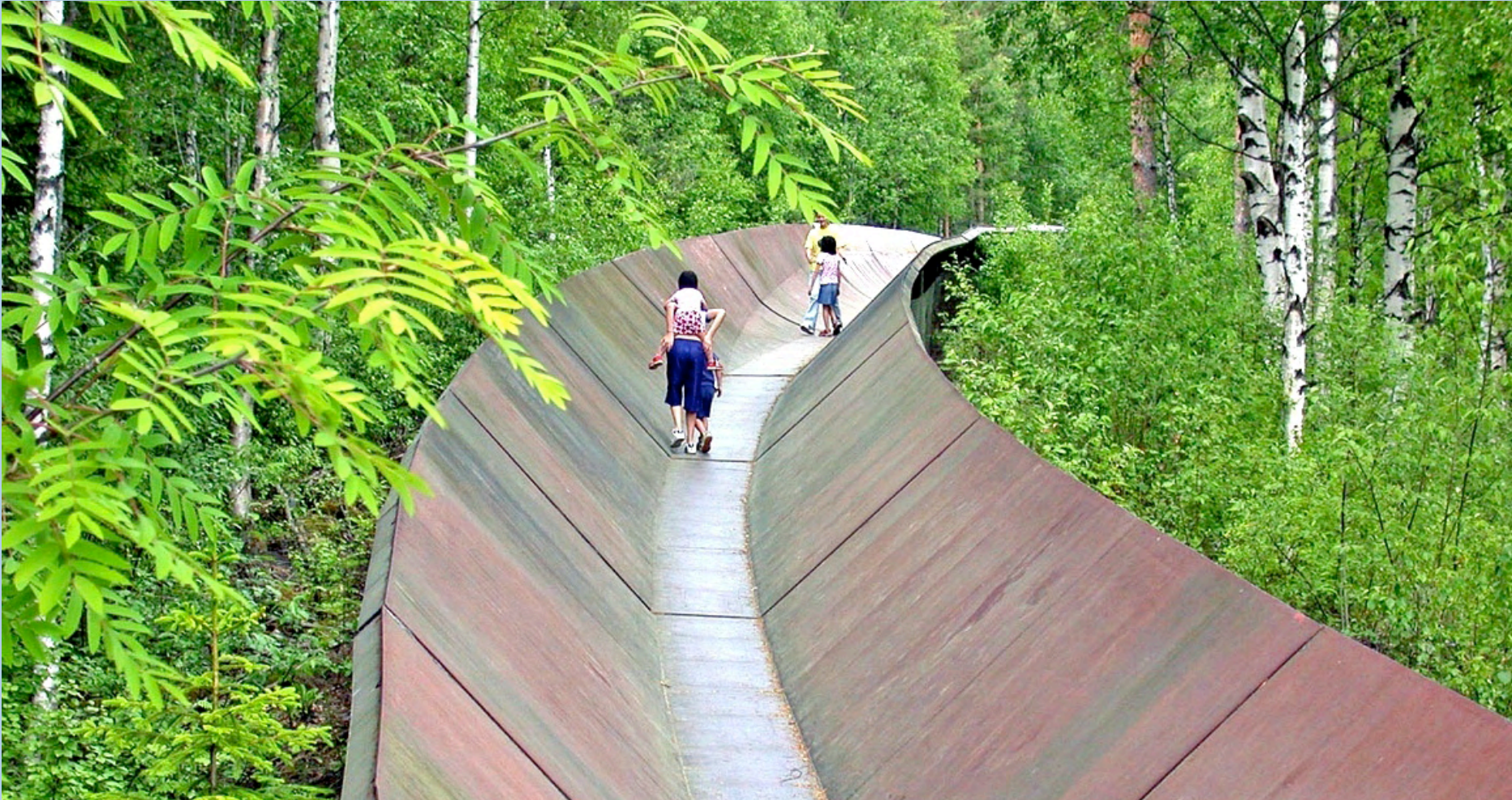In 1873, the people of Grisbacka village leased the village’s fishing waters and beaches to Hörneå AB for the company to build log driving facilities. The company later became part of the Umeå log driving association, which planned a significant expansion to these activities. The first sorting facility in the Ume River was by Gammhultet, located on Västerbacken near the western end of the Waldorf School. By the late 19th century, the facility was no longer sufficient and had to be moved. The new facility, Nyhultet, was established in 1891 at the edge of Grubbe and Grisbacka. It had barracks, offices, a dining hall, smithy and boatbuilding facility. For 23 years, this was the seat of the operation and it served as a significant workplace for the region. All that remains of the sorting facility today is the concrete foundation. Because the sorting location was too shallow, with a current that was occasionally too strong during parts of the season, the sorting plant was moved to Lillån and Ön in 1915.
The Ume River has numerous bomkistor, or boom holders. A boom holder might be a timbered structure with stones inside, or it could be fully cast in concrete, as seen in the river outside downtown Umeå. Boom holders were used to secure the log booms that regulated the timber floating down the river, preventing them from getting stuck at the water’s edge. There are still boom holders from the sorting location on Ön by Lillån to the timber warehouse in Spöland. Many are still in good condition, but the timbered ones have rotted and all that remains are several little islands overgrown with birch in the middle of the channel.

Lillån sorting facility
The sorting plant was established on southwest Ön in 1915. The facility by Lillån stretched the length of
Ön. 1937 was a record year for log driving and Ön’s workforce amounted to about 500 men. Properties remaining today are on Ön 2:5 and Ön 2:13 A., where there are residences, a warehouse, offices, assembly hall, a workshop and two storerooms.
The Log Driving Association’s buildings on Southern Önabben are of historic value and important to the island’s history. The Föreningen Byggnadskultur i Umeå (Building Heritage Association of Umeå) believes that, to the extent possible, these buildings should be restored and preserved.
The community by Lillån is called “Flottarbyn”, the log driving village.

Mooring posts, dolphins (dykdalber in Swedish, from duc d’Alb, mooring points in Dutch channels constructed by the Duke of Alba) are fixed mooring structures or bumpers comprising a group of pillars that have been secured together or foundations; they were used to secure the timber booms that guided the timber. One dolphin structure remains at the inlet of Lillån. The rest have decayed or been removed by the Log Driving Association.
Remains of log driving have decayed or been removed, but some structures remain beneath the water’s surface, posing a risk to boats and others. Mooring posts are visible in the Baggböle rapids. Booms were placed between the dolphin structures in the river’s stretches of smooth, calm waters.
Bölesholmarna islands, sorting facility
Log driving took place until the 1980s. Several booms were situated along the river and the area around the islands served as timber storage.
There were raft barracks and a suspension bridge whose foundation could even be seen on Gröna Oxen. Visitors can also see other remains, such as ropes, logs, concrete structures etc.


